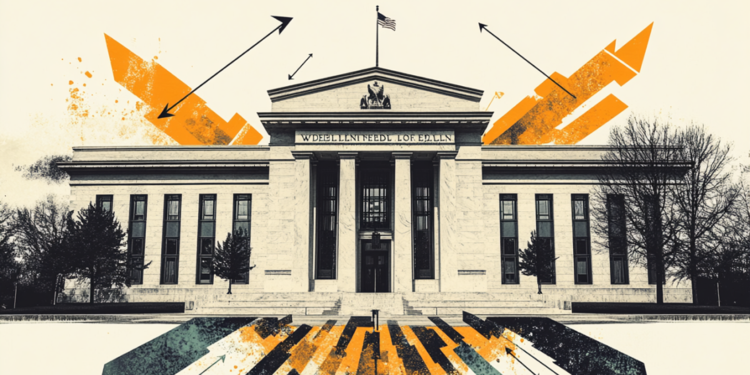- EUR/USD weakens to around 1.0300 in the Asian session on Friday.
- Several Fed officials favor slowing the pace of interest rate cuts.
- Eurozone retail sales showed tepid growth in November.
The EUR/USD pair is trading with a slight negative bias around 1.0300 during Asian trading hours on Friday. The Federal Reserve’s (Fed) decision to delay cutting interest rates continues to boost the Dollar and put some selling pressure on the major pair. Traders are preparing for the US December Non-Farm Payrolls (NFP) report, due out later on Friday.
Several Fed officials signaled caution about rate cuts, citing high inflation and uncertainty under the incoming administration of Donald Trump. Boston Fed President Susan Collins said Thursday that significant uncertainty about the outlook requires the U.S. central bank to move cautiously with future rate cuts.
Meanwhile, Fed Governor Michelle Bowman said she sees interest rates on hold for now until data shows inflation has resumed its downward trend. The hawkish comments from Fed officials could support the US Dollar (USD) against the Euro (EUR) in the short term.
Across the Atlantic, Eurozone retail sales figures fail to boost the shared currency ahead of key US jobs data on Friday. Data released by Eurostat on Thursday showed retail sales rose 1.2% year-on-year in November after rising a revised 2.1% in October.
However, preliminary Eurozone Harmonized Index of Consumer Prices (HICP) data for December has delayed expectations that the European Central Bank (ECB) will deliver a significant rate cut. This, in turn, could help limit EUR losses for the time being.
Euro FAQs
The Euro is the currency of the 19 countries of the European Union that belong to the eurozone. It is the second most traded currency in the world, behind the US dollar. In 2022, it accounted for 31% of all foreign exchange transactions, with an average daily turnover of more than $2.2 trillion per day. EUR/USD is the most traded currency pair in the world, accounting for an estimated 30% of all transactions, followed by EUR/JPY (4%), EUR/GBP (3%) and EUR/AUD (2 %).
The European Central Bank (ECB), headquartered in Frankfurt, Germany, is the reserve bank of the eurozone. The ECB sets interest rates and manages monetary policy. The ECB’s primary mandate is to maintain price stability, which means controlling inflation or stimulating growth. Its main tool is the increase or decrease in interest rates. Relatively high interest rates (or the expectation of higher rates) tend to benefit the euro and vice versa. The Governing Council of the ECB makes decisions on monetary policy at meetings held eight times a year. Decisions are made by the directors of the Eurozone’s national banks and six permanent members, including ECB President Christine Lagarde.
Eurozone inflation data, measured by the Harmonized Index of Consumer Prices (HICP), are an important econometric indicator for the euro. If inflation rises more than expected, especially if it exceeds the ECB’s 2% target, it forces the ECB to raise interest rates to bring it back under control. Relatively high interest rates compared to their counterparts tend to benefit the euro, making the region more attractive as a place for global investors to park their money.
The published data measures the health of the economy and may have an impact on the euro. Indicators such as GDP, manufacturing and services PMIs, employment and consumer confidence surveys can influence the direction of the single currency. A strong economy is good for the Euro. Not only does it attract more foreign investment, but it may encourage the ECB to raise interest rates, which will directly strengthen the euro. Otherwise, if economic data is weak, the Euro is likely to fall. Economic data for the four largest eurozone economies (Germany, France, Italy and Spain) are especially significant, as they represent 75% of the eurozone economy.
Another important data that is published about the Euro is the trade balance. This indicator measures the difference between what a country earns from its exports and what it spends on imports during a given period. If a country produces highly in-demand export products, its currency will gain value simply from the additional demand created by foreign buyers seeking to purchase those goods. Therefore, a positive net trade balance strengthens a currency and vice versa in the case of a negative balance.
Source: Fx Street
I am Joshua Winder, a senior-level journalist and editor at World Stock Market. I specialize in covering news related to the stock market and economic trends. With more than 8 years of experience in this field, I have become an expert in financial reporting.







